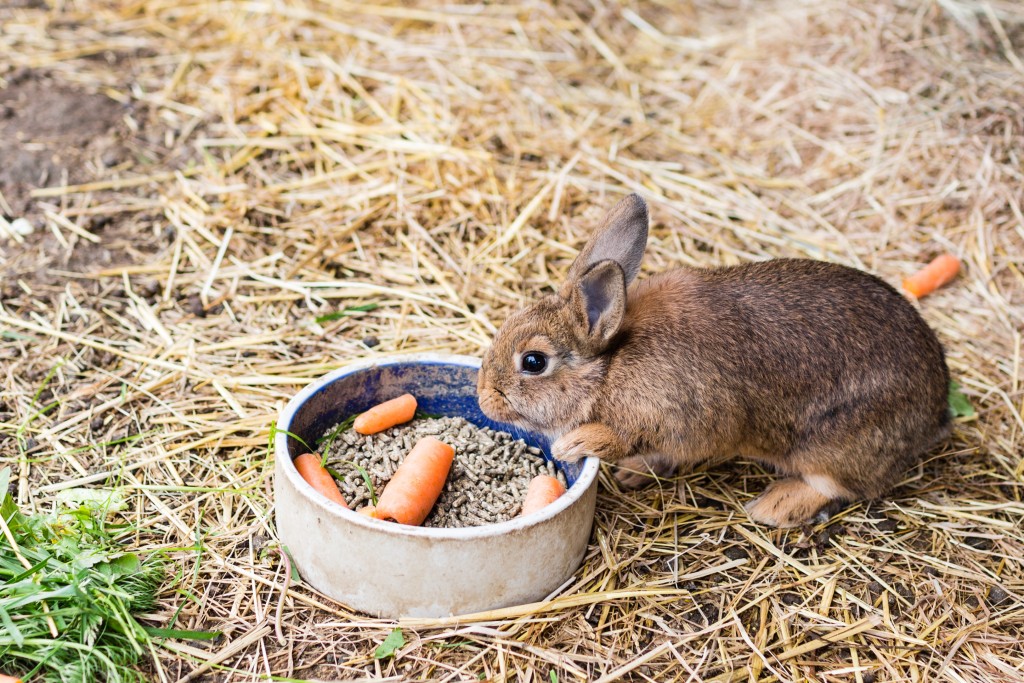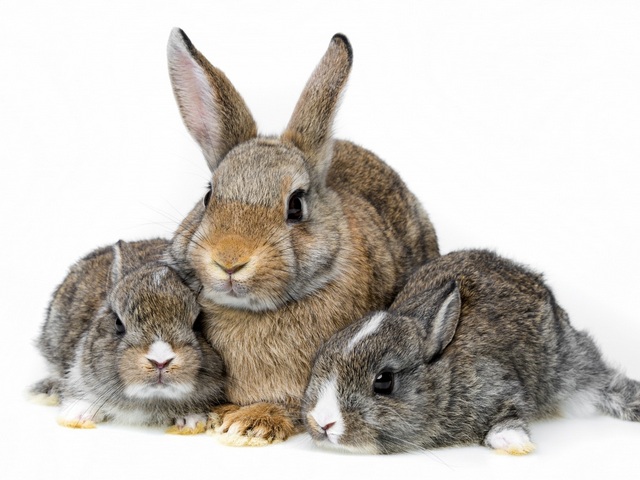Breeding rabbits is a very exciting, but also time-consuming process, which requires special responsibility and care. Such eared creatures need proper nutrition, constant care and suitable conditions. And if you don’t know, what to feed rabbits in winter at home, you can’t even dream of a good and healthy offspring.
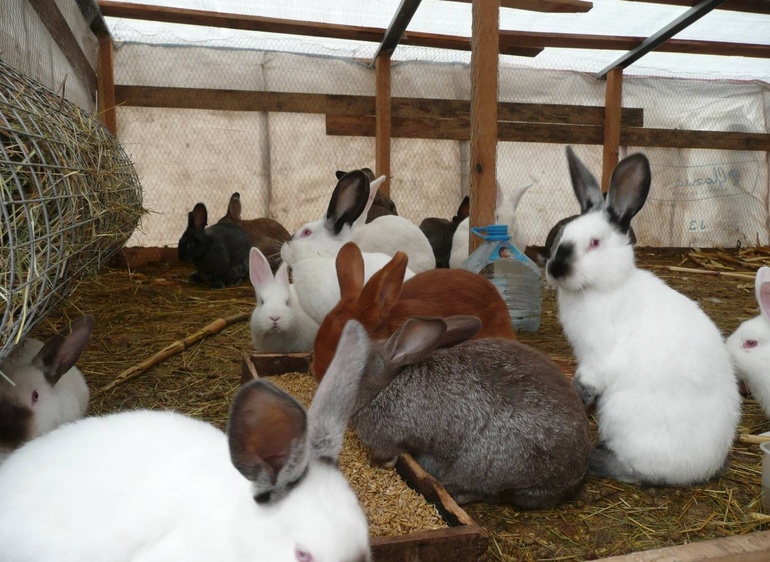
Content
general information
The start of the winter season is becoming a real challenge for pets, especially for rabbits. They react negatively to cold snap, begin to hurt and even die. To prevent this, you need to figure out how to feed rabbits in the winter, if there is no hay and how to choose the right feed for the eared.It's no secret that lowering the air temperature below -25 degrees Celsius can be fatal for rabbits, because in this frost they freeze their limbs and develop deadly diseases. Therefore, with the advent of winter, the cages of these domestic animals need to be isolated from the wind by placing in a warm stable or other room.
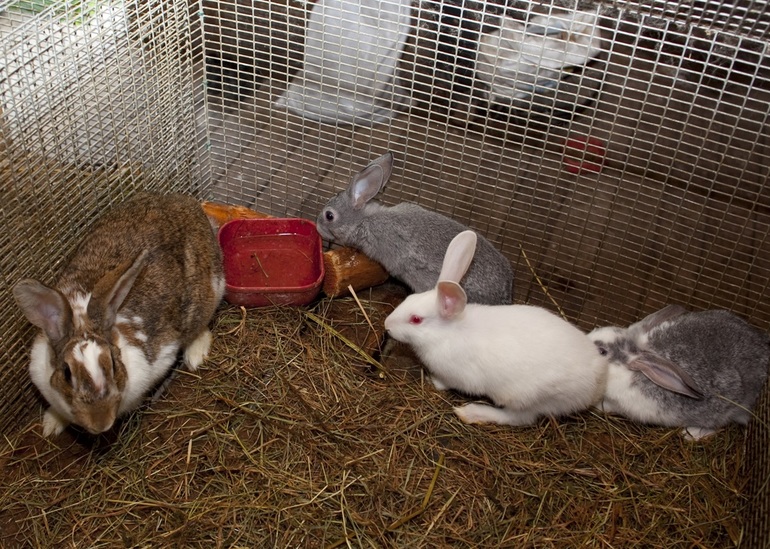
Also, they need to be insulated with straw, both outside and inside, lining the floor. Even in the rabbit "house" there should be a three-sided cladding of thick wood. If the frost intensifies, the cells are transferred to the veranda of the house, in the greenhouse or barn. If it is not possible to transport such structures, the rabbit breeder needs to provide a special place for keeping pets warm in winter.
In such a period of time, animals need not only protection from the cold, but also in proper nutrition. A balanced diet will saturate the rabbits with the necessary substances, which will give them the necessary vitality to generate natural heat. The food used should be nutritious and healthy, able to strengthen the immune system to fight all kinds of diseases. You should choose fortified foods, in which there are many mineral elements.
If you think ahead of time, what is the best way to feed rabbits in the winter, then you will not have to be interested in the treatment of dangerous diseases of such animals in the future. A correctly selected diet, in which nutritious and healthy feeds are present, will be the best stimulation of healthy growth and good fertility of the rabbit farm.
The subtleties of feeding
In the warm season, rabbit breeders do not need to ask questions about the choice of food for their eared wards. At this time, a wide variety of fresh herbs is available everywhere, which makes up the bulk of the animals ’diet. But when winter comes and snow falls, the task becomes more complicated. To protect rabbits from cold and hunger, it is necessary to familiarize yourself with the basic subtleties of feeding in this difficult period of time. So, first of all, you should deal with the main types of feed that are used in home rabbit breeding. The following groups are distinguished:
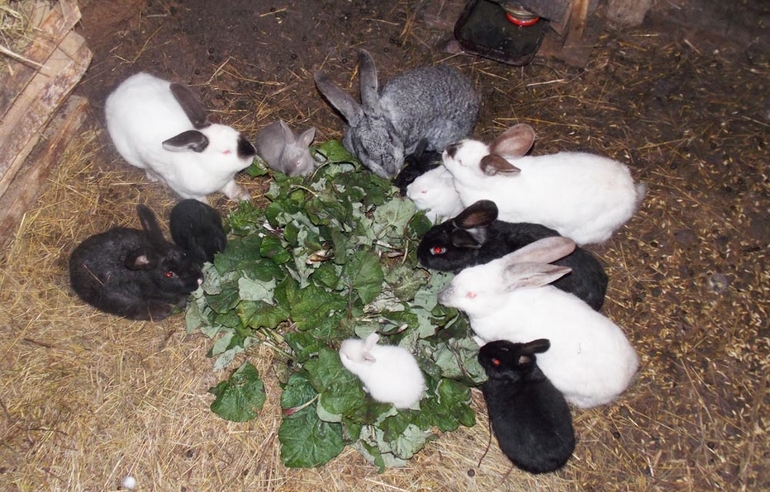
- Juicy foods, including silage, beets, turnips and gourds.
- Roughage. These include straw and hay, branches of coniferous and deciduous trees, as well as bark.
- Green feed. They are nutritious foods based on alfalfa, nettle, clover, burdock and all kinds of plants growing in the field or in the meadow.
- Concentrated food. This group includes corn, bran, grain and oilcake.Also here are ready-made feed.
- Products of animal origin. Among them, fish oil, skim milk and whey.
- Food waste represented by dried bread, remnants of cereals and soups. For feeding, you need to use exclusively fresh, unspoiled foods, otherwise the offspring can get sick and undergo various digestive problems.
- Feed additives. These include chalk, bone meal and salt. Such ingredients contribute to the deficiency of certain minerals.
Having dealt with the main varieties of feed for the winter keeping of rabbits, you need to determine the form of feeding. There can be two of them:
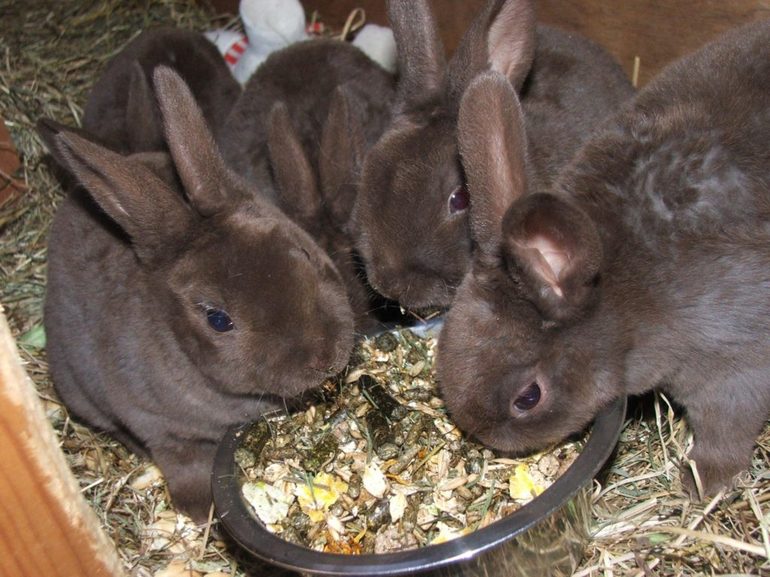
- Mixed.
- Dry.
In the first case, rabbits are fed with products from different groups, which were presented above. In the second diet consists exclusively of dry feed. Often, in their quality, ready-made compound feeds are used, in which all vitamins and nutrients are correctly combined. Choosing the appropriate composition, you need to be guided by the age characteristics of the animals, because for representatives of different ages, an appropriate composition of food is developed.
Diet specifics
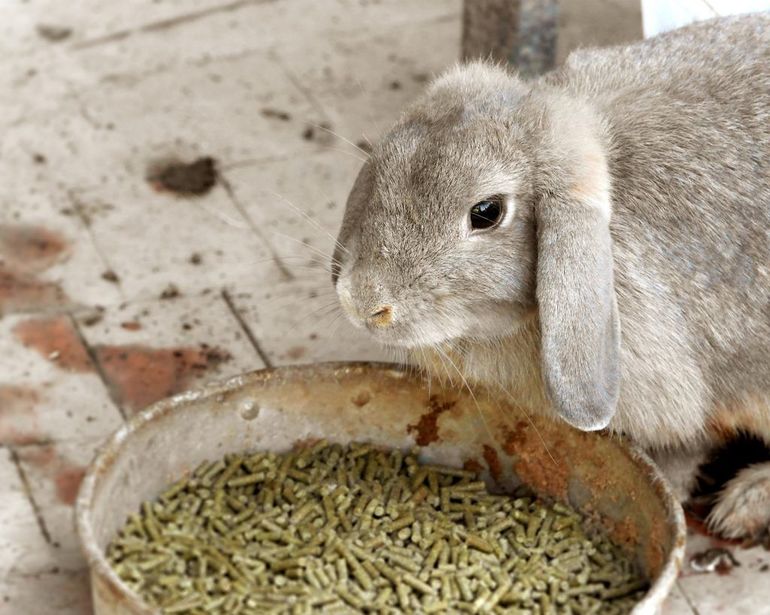
It is known that the nutrition of rabbits in winter is significantly different from summer. It can be either dry or mixed, but experienced rabbit breeders stop at the first option, buying ready-made compound feeds with the right combination of the right substances and vitamins.
However, mixed feeding is no less useful, especially if you combine different types of food with a rich content of minerals and fortified components, which will give individuals the necessary strength to restore body temperature and productive growth. In addition, the second type of feeding is more profitable from an economic point of view, since the necessary food can be prepared independently, without overpaying for expensive compounds in stores.
Naturally, feeding the rabbit in winter with green grass will not succeed, but you can use hay as a good alternative to such food. Many underestimate its nutritional value, but in fact it is practically not inferior in volume to vitamins and minerals of fresh grass. It is simply important to follow some rules for the procurement of raw materials in order to preserve its value. In the absence of hay, rabbits can be fed with vegetables and fruits that remain safe and sound even in severe frosts.
In winter, when it is not possible to give the rabbits fresh green grass with abundant moisture content, the diet should be diluted with succulent feed. They should be 80% water. These foods include the following options:
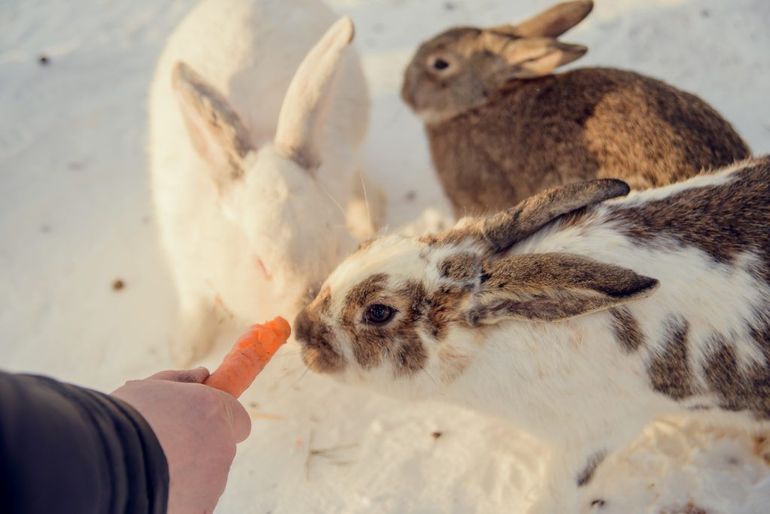
- All kinds of root crops.
- Representatives of gourds.
- Silage.
Such a food improves the functionality of the digestive organs, raises the indicators of fertility, and also stabilizes the metabolic processes in the body. Juicy food is required for lactating rabbits, because it contributes to the production of milk. The composition of such feeds contains carbohydrates, which are quickly absorbed and are the most important element for the normal development of offspring.
The most popular member of the succulent foods group is carrots. Using root crops, animals make up for the lack of vitamin A and become resistant to various diseases.
Roughage
In the group of roughage there is a plant food without moisture, but with a large percentage of healthy fiber. They quickly saturate hungry animals, contributing to the improvement of the digestive system.However, the daily norm of such food in the diet should not exceed 30%.
And the key roughage is hay, which is the best alternative to fresh grass. To harvest such a product, you can use both meadow and field plants, which are mowed and dried before flowering. Despite many stereotypes, high-quality hay contains no less vitamins and useful elements than freshly picked greens. Therefore, the proportion of this feed in the winter diet can be large.
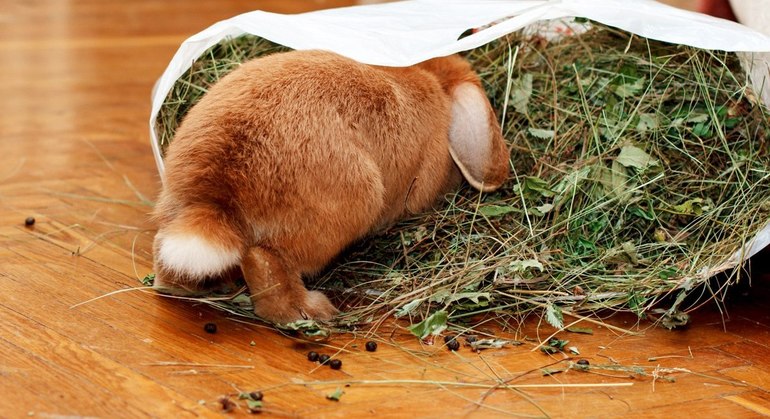
A real treat for eared creatures is ordinary nettle. Animals respond positively to such a treat, both fresh, if we talk about the warm season, and in the dry, which is important for the winter season. To please rabbits with pleasant food, it is necessary to collect raw materials in early spring, and then dry them in a shaded room with good air exchange. You can store dried nettles in any suitable container, since fragile leaves of the plant will crumble. Collecting such food is easy.
In the daily diet of rabbits should be present branch feed. To prepare it, you need to pick fresh twigs from shrubs and garden crops in early spring, and then dry them (you can with leaves). However, it is better to refuse individual shoots, because they contain tannic and life-threatening substances of animals.
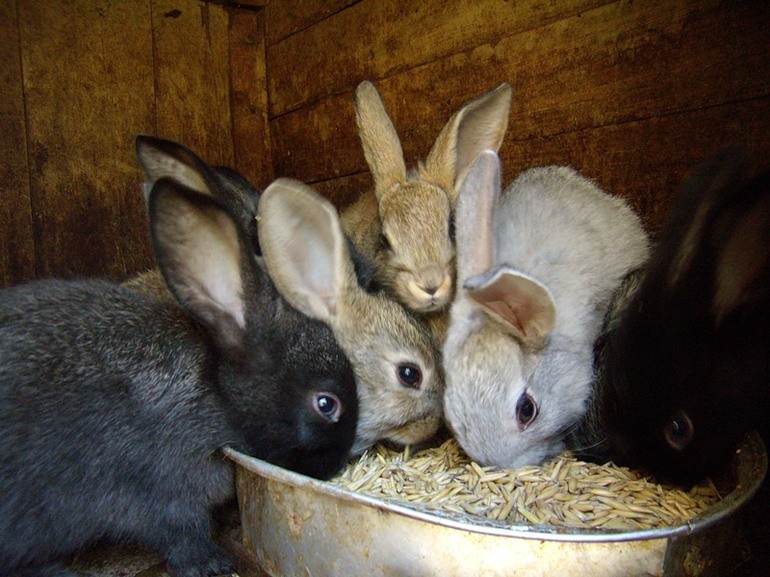
In order for winter feeding to be complete, the seeds and grains of garden crops must be present in the diet of rabbits. First of all, we are talking about seeds of Pancake week plants, which are given eared as a whole, and in crushed form.
When using cereal and bean seeds, they are pre-crushed, because it is required for faster digestion of food by the weak digestive system of rabbits. Before eating food, it should be moistened in water to prevent possible irritation of the respiratory system by dust from small particles. For the productive growth of offspring in the cold season, they need to be fed ready-made assorted grains, combining different types of food.
Decorative breed care
When growing a decorative breed of fluffy creatures, they need to be fed according to the same principles as an ordinary rabbit. However, the former are exposed to various diseases of the digestive system, therefore, when compiling a diet, it is necessary to be extremely careful and careful. Individuals of a decorative type prefer such food:
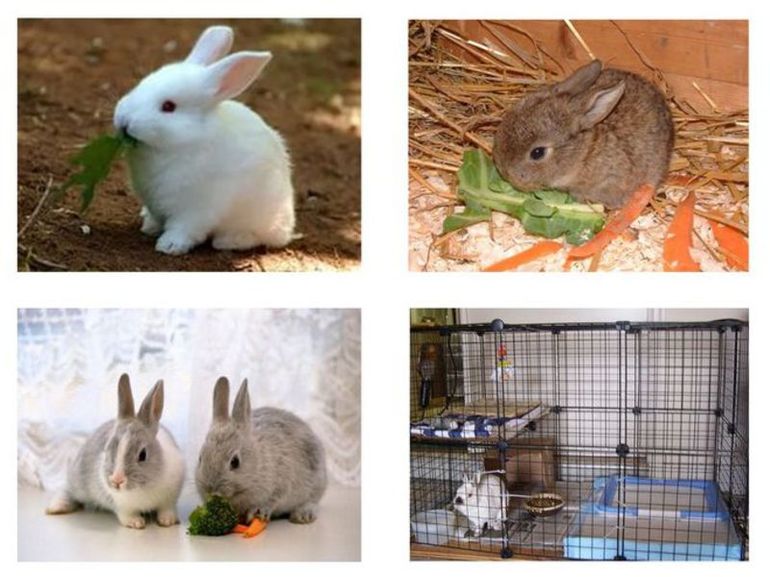
- Hay.
- Cereals, prepared feeds and cereal products.
- Vegetable tops and root crops.
In the morning, the choosy animal is given dry food, and in the evening, root crops. Fresh hay should be present in the feeder around the clock, because the rabbit always wants to chew something.
Useful Tips
Professional breeders claim that everyone novice rabbit breeder can figure out how to feed the rabbits in the winter. But so that the feeding is balanced and correct, You must adhere to the following recommendations:
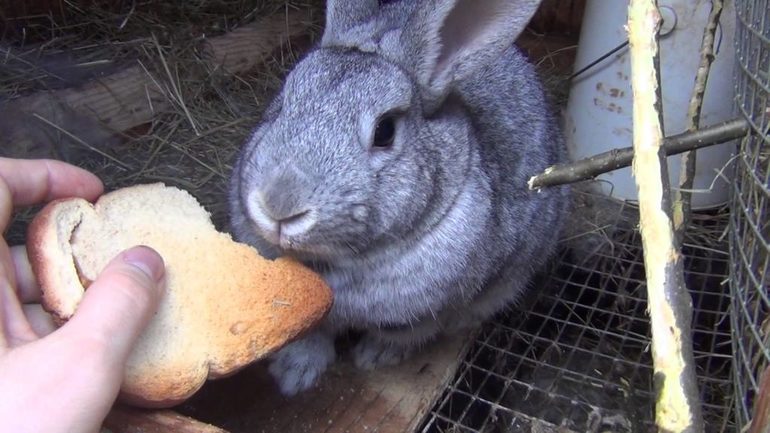
- If food is poorly absorbed by the digestive system of the eared, it needs to be soaked for 2-3 days in water. This principle applies to hard crops, which are an important part of the winter diet.
- Harvesting branches for the winter, you need to abandon the bird cherry, apricot, elderberry and buckthorn. The use of such food can lead to severe poisoning of animals. Also, it is better not to feed rabbits with tops of tomatoes or potatoes. Tomato vegetation is a dangerous product, especially at the flowering stage.
Growing rabbits, you need to remember that these animals, although not finicky, but vulnerable to various diseases due to the wrong choice of diet.Their digestive system is designed in such a way that the lack of a balanced diet will entail a lot of trouble, including serious illness, and even the death of offspring.
To prevent this, it is important to be responsible and take into account all the needs of these cute fluffy creatures. When compiling a daily menu for rabbits, it is important to pay attention to their age characteristics, the size of each individual, as well as the general condition. Also, one should not ignore the advice of experienced breeders and colleagues, because they will help to avoid mistakes and protect the family from dangerous diseases.
In any case, the success of breeding rabbits directly depends on the responsibility of the breeder. And proper winter feeding is one of the most important stages in the maintenance of cute creatures, which should be given special attention.

